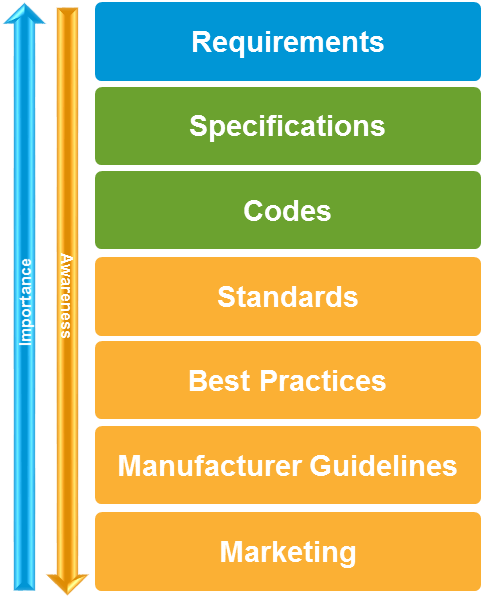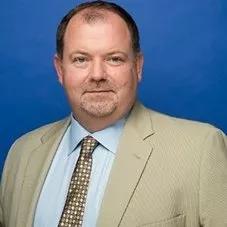Technology Buzzwords: Finding the Real Fit, Form and Function
Is your building “smart”? Are you ready for the “cloud”? What is your “IoT” strategy? Can you capitalize on “Big Data”? How will “5G” transform your business? When will your “convergence model” be operational? Who is your “digital enablement” partner?
Technology buzzwords like these have been present in our industry for as long as I can remember. They’re as helpful and harmful as they’ve ever been. They have the ability to describe incredibly complex ideas in a word or two; they also have the ability to confuse incredibly complex ideas in equal measure.
We use them just as much as anyone to help describe how we can create solutions to match business requirements; however, it can be frustrating when professionals are gathered around a table united by jargon but separated by a common language.
Instead of the questions above, the real questions we should be asking are more like:
- How can I transform my business for the better?
- How can I build on our strengths and eliminate potential weaknesses?
- How can I respond to the opportunities and threats in the marketplace?
- Will this enable my business to succeed now and be ready for the future? How do I get there?
Fit, Form and Function

Instead of mere technology buzzwords, we should be looking at fit, form and function when it comes to technology. (Another “buzz phrase,” I know – this one stolen from the manufacturing industry.)
The most important thing (as we’ve already discussed) is what your business really needs – and how technologies can help you achieve those targets.
Your requirements are yours – no one else’s. They should drive your specifications and ensure that you comply with all relevant codes and regulatory requirements. You can use standards, best practices, manufacturing guidelines and even the message of marketing to tell your story. This will help you focus on fit, form and function.
So what do these terms mean, exactly?
- Fit is what you need to achieve. It provides the fit for your organization. If it doesn’t “fit,” it won’t meet your needs.
- Form is provided by the use of specifications that draw on codes, standards, best practices and manufacturer guidelines. It will provide the literal form of your required solution.
- Function is the process used to create the form that is the fit. Whether you build it yourself, issue a tender or engage a service provider is situationally dependent. The function refers to the mechanics used to apply the form and create the desired fit.
Becoming More Efficient and Effective
Let’s use an example of a client that wants a “smart building”:
- What does that mean?
- How does their vision “fit” with organizational needs?
- What solution are they looking for (the “form”)?
- How will that be functionally achieved?
With only that information – that the client wants a smart building – the answer to the first question in that list (and all subsequent ones below) is: “I don’t know.”
Ultimately, I don’t mind the expression of wanting a smart building. It gives me the opportunity to ask basic, high-level questions (enabled by technology buzzwords) and drill down to help flesh out the true need. Are you hoping to reduce the amount of time spent on manual tasks? Do you want to reduce operating costs?
Once we have the answers to those questions – the “why?” questions – then we can work on the form and function as we eliminate the unknowns and reach a common expectation as to what we need to do to achieve the real goals.
This type of conversation may even generate even more technology buzzwords. Can we use OMx or Category Z cabling to provide connectivity to IoT-enabled devices? Based on a service provider’s model for a converged, cloud-based infrastructure that will provide a digitally enabled, 5G-compatible application for tenants? Oh my, that sounds like a mouthful.
But imagine you work at a hospital that has experienced a significant increase in non-clinical-care-related operating expenses. You’re seeing a consistent drain on the human resources team members as they provide directions to people who are looking for certain departments. This affects wait times, causes delays, leads to missed appointments and subsequently wastes other resources for under-utilized rooms, equipment and professionals.
Customer satisfaction and patient outcomes are being negatively affected and costs are increasing in clinical and operational areas. As your range of services and professionals expands, waste and inefficiencies are also growing. What can be done?
Let’s presume that this fictional hospital did a root cause analysis and observed that one of the major (or easily identifiable) factors causing these negative effects was poor wayfinding. It’s a large, sprawling building. It’s new, filled with the latest equipment and the best healthcare professionals – but it’s not easy to navigate. Patients (and even employees) don’t always know where they’re going. If we could improve that metric, the benefits could help overcome the snowballing negative impact on operations.
So what’s the solution? It could be a wayfinding system with fixed stations for visitors and a mobile app for staff. The fixed stations could be connected to a destination dispatch elevator system that brings the patient to the right floor. For those who can’t navigate, a press of a button could open a video chat rather than relying on people stationed at every map. A mobile app could have a “maps” function to show staff not only where they are and where they need to be, but also how to get there. It could be synced to mobile devices and work with scheduling applications that are tied to hospital systems.
Patients could be notified of early access or unplanned delays so the right person shows up at the right time. The service provider has a glass pane to look into other building systems as well as scheduling and wayfinding.
The staff responsible for prepping the operating room would walk into a space with the lights already on, environmental systems already at required levels and equipment already audited. The non-clinical staff would know which rooms need to be cleaned, when to porter a patient and when to service a machine, wasting as little time as possible.
By applying resources to whatever may be needed at the right time, in the right amount and wherever they’re needed, efficiencies could be realized. Waste can be reduced and ideally eliminated. Resources and investments can focus on delivering clinical care, improving patient outcomes and supporting client/staff satisfaction.
Does this make the hospital “smart”? I don’t know. And it really doesn’t matter. What I know and care about is the fact that the hospital is now more efficient and effective.
So use the technology buzzwords and use the jargon … but use them as a starting point. Then, make sure everyone around the table has an understanding of the true meaning: the fit, form and function.
